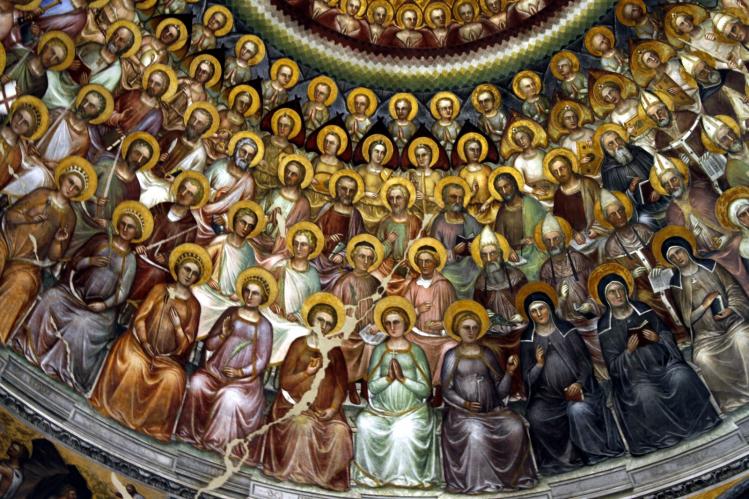
I’ve been observing with some tenderness the ways in which my friends are going gray. One at the temples, another with ethereal opal strands, a third with magnificent waves of peppery black. My younger brother started graying in his twenties. They came in patchy at first: a sideburn, a cowlick, a shock of white on the back of his head. A decade later, the gray has established itself with authority. My husband, whose sandy brown hair makes a less obvious contrast to gray, is manifesting the passage of time in his eyebrows, which have begun to grow gangly and askew in that unmistakable old-man way.
When I was young, the women around me talked about the appearance of gray hairs with the same repulsed urgency I use when reporting cockroach sightings to the exterminator. Grays were dreaded indicators of mortality, confirmations of the ways we’re beholden to time. Such antipathy always confused me, though: gray seemed mysterious and dignified, the undisputed coif of choice for writers and lighthouse-keepers and lupine-planters. Not long after the pandemic’s first apocalyptic spring, I began to notice my own gray hairs emerge, then multiply. One morning I knelt to tie my oldest daughter’s shoes, and she exclaimed with mischievous glee that the top of my head was speckled with white. The sudden ingression of these unbidden strands seemed, for all intents and purposes, right and just. Death was doing its thing on the world. The hair was my own memento mori, a cross of ashes threaded onto my body. Reminders of death’s nearness were everywhere, and they were almost uniformly terrifying. But these slivers of gray forecasted my someday-death in a different voice: they felt beautiful, familiar, like the whisper of a confidant. Here, it seemed, was the companion to St. Francis’s Sister Death. I could wear fragility like a crown.
November is the month of mortality—the month of saints and souls. God may remain confoundingly hidden, but saints leave trails of matter: bones and teeth and corpses that miraculously refuse to decompose, catacombed skeletons adorned with jewels, vials of blood and locks of hair, tunics and tilmas and roses out of season, and things stranger still—severed heads and eyeballs on a plate and candles that heal throat ailments. It’s little wonder that these November days give way to dark Advent longing for God enfleshed.
An old friend, now ordained, sent us a second-class relic of Alberto Hurtado, Chile’s beloved saint of the poor. The tiny square of black cassock is laminated onto a holy card the size of a sugar packet. The relic lives on the makeshift altar in our Useless Wall Alcove, a distinctive feature of early 2000s-era home construction built to contain faux-Tuscan vases filled with decorative sticks. Alberto Hurtado’s cassock fragment is joined by the artifacts of fellow faithful departed: a soft-focus portrait of my grandmother as a young woman, my great-grandmother staring down the camera with Depression-era severity, my husband’s late mother cradling him at his baptism. My great aunts—their pictures are there, too—lived in a small Midwestern brick house whose contents were roughly 80 percent holy cards. You couldn’t open a cookbook without somebody’s funeral card falling out. I have since learned that if you live in a place long enough, it’s only a matter of time before the dead start making their homes between the pages of books, wedging themselves into the corners of picture frames, fastening themselves to the side of the refrigerator.
My middle daughter, age five, talks about death with the macabre familiarity of a mystic. After a driveway visit with our 91-year-old neighbor, Lucy asked when my face would be covered in lines like Mr. Ed’s. Then she asked me when I’ll die. Once I took a video in which I asked her ordinary questions, hoping to create a charming artifact of her innocent early years.
“What’s your favorite food?” I asked.
“Skeleton bones,” she responded, cackling.
These days I find myself looking down at my hands with their veins like dried riverbeds, like distant satellite images of possible planetary water. I look in the mirror at my forehead with its permanent creases, evidence of too much squinting and smiling and furrowing. I sweep back my scattering of gray hairs. It feels like such a different thing, to watch the passage of years written on my body.
“Contento, Señor, contento,” Alberto Hurtado was known to say, even as pancreatic cancer was ending his life. “I’m content, Lord. I’m content.” Hurtado, a Jesuit, seemed to have embraced that elusive Ignatian spiritual discipline of indifference, a non-defensive vulnerability to the will of God and to reality. Paradoxically, his practiced contentment made him more, not less, committed to justice, which he sought in corporal—which is to say, bodily—works of mercy among those whose own bodies society had deemed most expendable. Maybe it’s contentment I’m seeking when I marvel at the graying hair of the people with whom I was once young. Sanctity is often miscast as the ascetic subordination of our fallible, decaying bodies to the eternity of the soul, as if the one can be extracted from the other. But November’s saints invite us, I think, to embrace the body as the site of companionship: with one another, with time, with God. Maybe that’s what relics are; their bones speak to our bones, their flesh to our flesh. In the communion of saints, the dead keep company with one another. In funeral programs and fragments of cloth and steadily graying hair, they keep us company, too.
Please email comments to [email protected] and join the conversation on our Facebook page.
Previous Story
Good Spirits
Next Story
‘Don’t Worry, This Is a Catholic House’